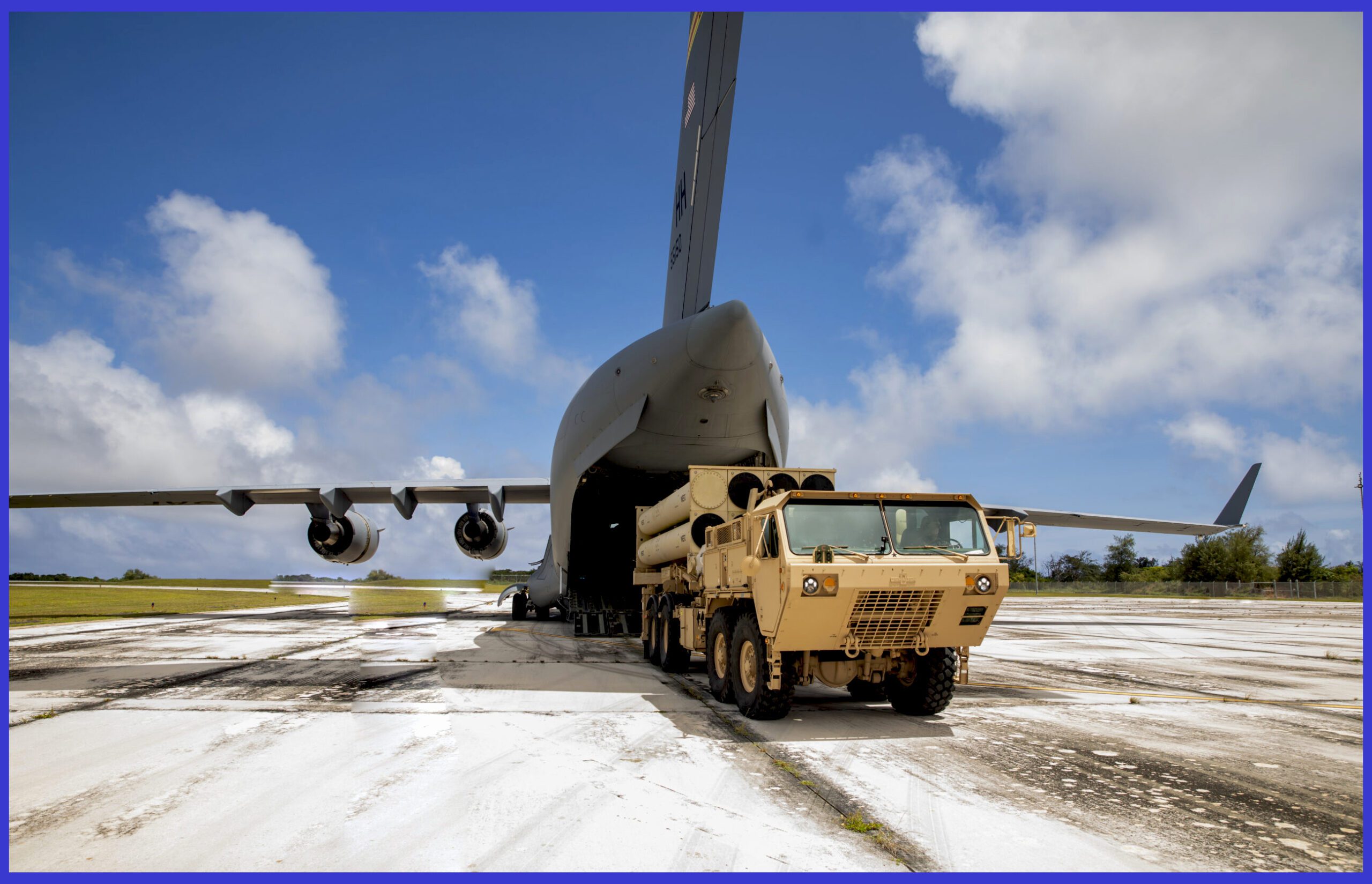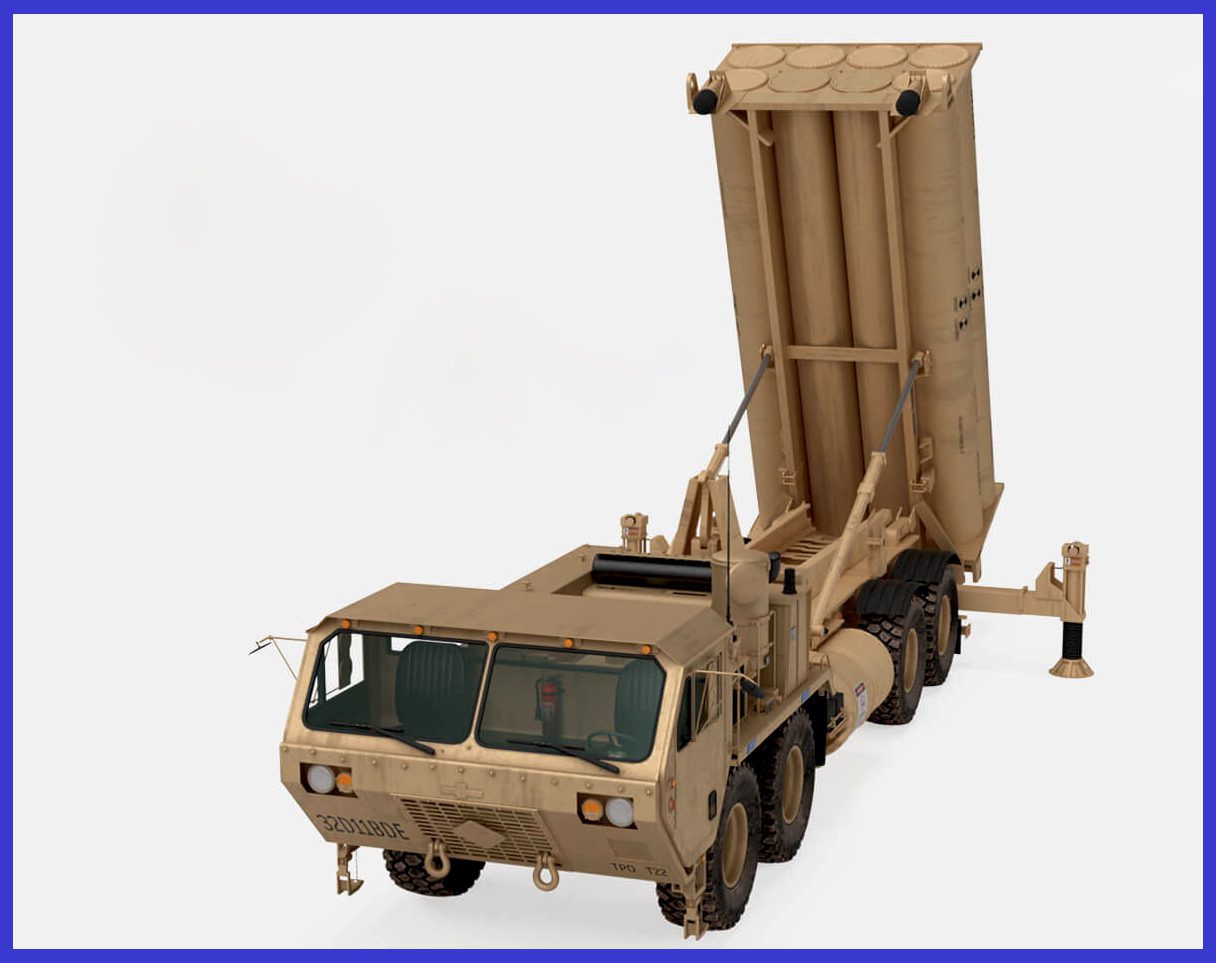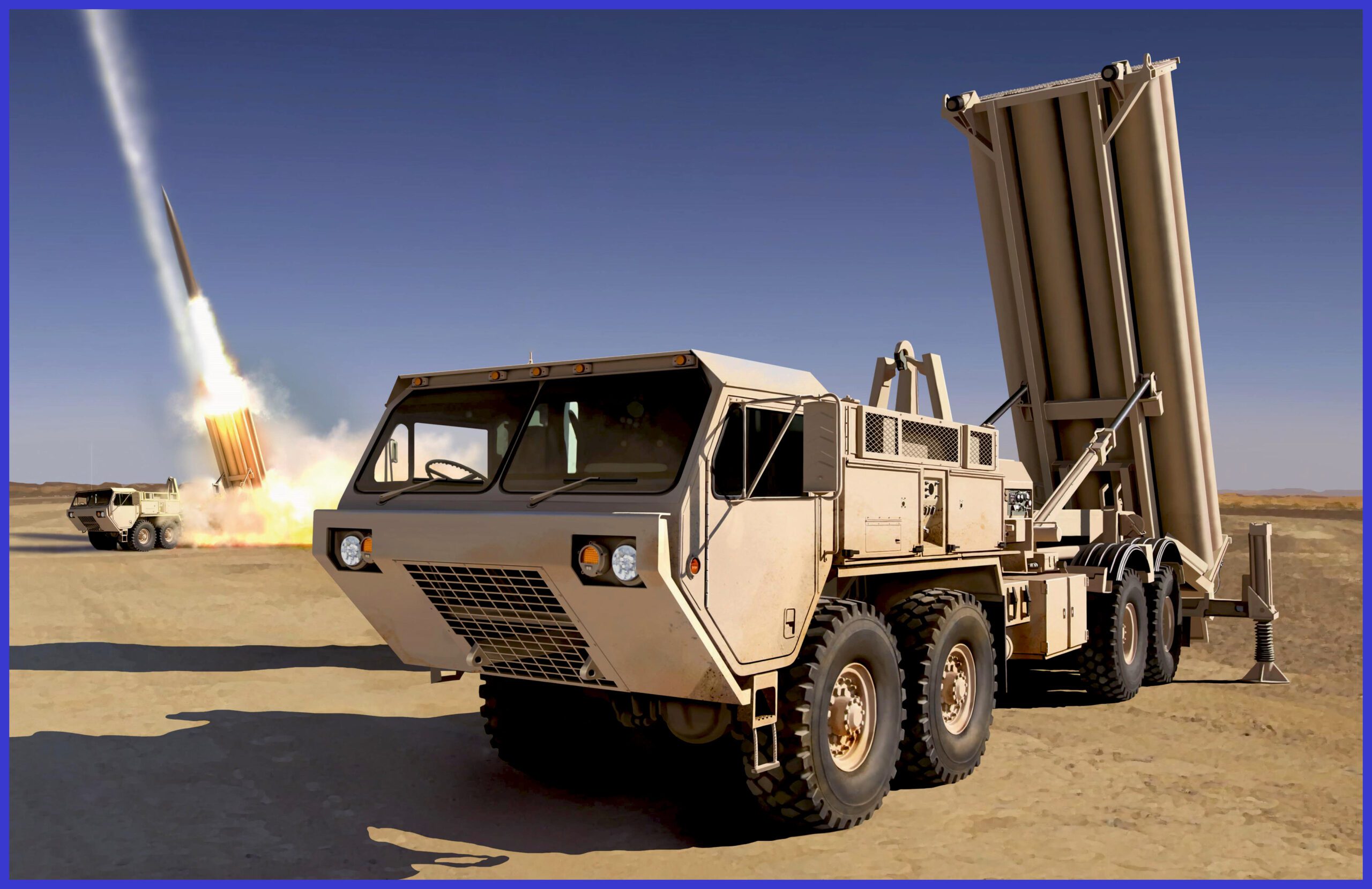The Terminal High Altitude Area Defense (THAAD) is a cutting-edge mobile anti-ballistic missile system designed to intercept and destroy short, medium, and intermediate-range ballistic missiles during their terminal phase of flight. Discover the Best of the THAAD Mobile ABM System. Renowned for its versatility and effectiveness, THAAD boasts a powerful radar system, a transportable launcher, and advanced interceptor missiles. The radar system of the THAAD can track and identify threats at extended ranges, supplying essential data for target engagement. The mobile launcher enhances flexibility and enables rapid deployment, positioning THAAD as a vital element in integrated air and missile defence for America and its allies.

Following Iraq’s Scud missile assaults during the Gulf War in 1991, the THAAD system was developed. Instead of carrying a warhead, the THAAD interceptor uses the kinetic energy of impact to destroy the approaching missile. The missile system has demonstrated its effectiveness through a successful track record in testing and deployment, serving as a potent deterrent against emerging missile threats. It provides a robust and reliable defence mechanism for both military and strategic assets.
The need for this tactical shield falls within the purview of the Missile Defense Agency for the US Army. Additionally, the Navy has a corresponding program, the sea-based Aegis Ballistic Missile Defense System, which includes a land component known as Aegis Ashore. As of 2023, it has been deployed not only in the United States but also in the United Arab Emirates, Israel, Romania, and South Korea.

Development of the THAAD Mobile ABM System
The development of the Terminal High Altitude Area Defense system commenced in the late 1980s as a response to the evolving threat of ballistic missiles, with a request for proposals submitted to the industry in 1991. In September 1992, the US Army selected Lockheed as the prime contractor for THAAD development. Before the creation of a physical prototype, the Aero-Optical Effect (AOE) software code was developed to validate the intended operational profile of Lockheed’s proposed design.
The first THAAD flight test took place in April 1995, with all flight tests in the demonstration-validation (DEM-VAL) program phase occurring at White Sands Missile Range. In the initial tests, the first six intercept attempts missed the target. The first successful intercepts were conducted on June 10, 1999, and August 2, 1999, against Hera missiles.
The U.S. Army Research Laboratory (ARL) is responsible for doing the lethality and vulnerability evaluations of THAAD. Major electromagnetic components’ effects were evaluated as part of the THAAD vulnerability study. Included in this were lightning strikes on THAAD system components, electrostatic discharge, electromagnetic interference, electromagnetic radiation operations, electromagnetic radiation risks, and EM pulse.

The purpose of the ARL evaluations was to conduct a survivability analysis against threats such as conventional weapons, chemical weapons, and electronic warfare countermeasures. Additionally, the evaluations aimed to analyze the growth potential of the THAAD system, considering its tactical design. Infrared scene generation of infrared countermeasures (IRCMs) was employed, and the data collected from the analyses were used to construct trajectory models for targets and missiles, along with target trajectories.
The THAAD system underwent thorough testing and evaluations, including numerous flight tests to assess its radar, interceptor missiles, and overall effectiveness. The technology matured over the years and finally achieved notable success in intercepting target missiles during testing. Currently, Lockheed Martin Missiles and Fire Control serves as the prime contractor, overseeing the design, construction, and integration of the system. Key subcontractors include Raytheon, Boeing, Aerojet Rocketdyne, Honeywell, BAE Systems, Oshkosh Defense, and MiltonCAT.
Its mobile nature allows for rapid deployment to different theatres, providing a flexible and dynamic defence against ballistic missile threats. The continuous development and improvement of the THAAD system underscore its critical role in modern missile defence strategies. According to reports, on January 17, 2022, THAAD achieved its first operational interception, successfully thwarting an incoming hostile medium-range ballistic missile in the UAE.

THAAD-ER: Enhanced Range Version
To address the escalating threat posed by hypersonic glide vehicles, particularly the Chinese WU-14, which adversaries might employ to breach low- and high-altitude missile defences, Lockheed is advocating for funding the development of an extended-range (ER) version of the THAAD. The company financed the study from 2006 to 2008 and conducted static fire tests on a modified THAAD booster. To enhance the range, the current 14.5-inch diameter single-stage booster design would be upgraded to a 21-inch first stage. Additionally, a second “kick stage” would be incorporated to close the distance to the target, increase the velocity at burnout, and enable more lateral movement during an engagement.
Due to the change in missile diameter, the ground-based launcher would only accommodate five missiles instead of eight, but the kill vehicle would not require redesigning. As of 2020, THAAD-ER remained an industry concept; however, Lockheed believes that the Missile Defense Agency will express interest given the potential weapons developed by adversaries. To establish an intermediate capability against a rudimentary Chinese hypersonic threat, a system could be constructed by 2024 if funding for THAAD-ER commences in 2020. Nevertheless, the Pentagon is exploring whether railguns and directed energy weapons, expected to be available in mid-to late-2024, might be superior options for missile defence.

Specifications of the THAAD Mobile ABM System
- Weight: 900 kg (2,000 lb)
- Length: 20 ft 3 in) ( 6.17 m )
- Diameter: booster_ 13in (340mm) and kill vehicle_ 15in (370mm)
- Engine: Single-stage rocket
- Propellent: Pratt & Whitney solid-fueled rocket
- Range: 200 km (120 mi; 110 nmi)
- Flight ceiling: 150 km (93 mi)
- Speed: Mach 8.2 (2,800 m/s)
- Guidance: Imaging infra-red (IR) seeker head
- Accuracy: as per Lockheed Martin – Hit to kill
- Transport system: TEL (transporter erector launcher)

In conclusion, the evolution of the Terminal High Altitude Area Defense (THAAD) system represents a testament to the commitment to advancing missile defence capabilities. From its inception in response to ballistic missile threats to its deployment and ongoing enhancements, THAAD stands as a pivotal component in safeguarding against a range of missile threats. The system’s mobile and versatile nature, coupled with its successful intercepts in testing, underscores its importance in modern defence strategies.
As technology continues to evolve, so does THAAD, with potential advancements such as the Enhanced Range version reflecting a dedication to staying ahead of emerging threats. The continuous development and deployment of THAAD highlight the adaptability and resilience essential for countering the dynamic challenges posed by ballistic missiles in the contemporary geopolitical landscape.

Alongside this article, seize the exclusive opportunity to acquire premium scale diecast models of legendary fighter jets, including the F-14 Tomcat, F-15 Eagle, F-16 Fighting Falcon, F-18 Hornet, F-22A Raptor, and F-35B Lightning II. Available only at Air Models, these remarkable and iconic long-range military fighters boast impeccable track records and are now available for purchase on AirModels with worldwide delivery. Click here now to secure your piece before the limited stock is depleted.

Important Announcement for Our Valued Readers!
After an article is published, it is possible that updates or changes may have occurred beyond the time of publication. Therefore, it is important to be aware that certain information in the article might be outdated. To ensure the most accurate analysis, it is highly recommended to verify the content with the latest sources available.
However, we are dedicated to delivering outstanding articles on military products and global updates. Maintaining quality and smooth operation requires resources. Your support sustains our efforts in providing insightful content. By purchasing high-quality products through our affiliated links, you help us keep our platform alive and acquire top-notch items. Your unwavering support is invaluable and inspires us to strive further.
We welcome your suggestions and requests for more information, as we value feedback from our readers. If there’s specific defence material or equipment not covered on our site, please share your request in the comments. We’ll strive to research and provide the required information. We sincerely thank you for your unwavering interest in our website, and we eagerly anticipate hearing from you! Enjoy your reading experience!
